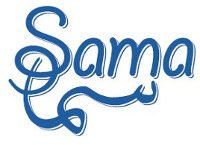
The Syrian craft production process is a unique one in its completeness, starting from its initial handmade steps, and ending with marketing and selling the products in the local and foreign markets.
And for this, the need arose for local markets to help the crafters selling their goods, benefiting both the local customer and the tourists coming from abroad.
Most of the big cities, along with many towns and villages in Syria, have their specialized markets for selling their handmade products, which are usually located near the historical and tourist places and monuments to attract the tourists in the first place. This does not mean that those products are going to be found only in these specialized, traditional markets, but these will be the main source for them.

The history of the traditional markets goes back to a different era: mainly the Romanian and Ottoman Empires, and the use for them was different at the beginning: like hosting travellers and warehousing the trade goods. Over the years those markets started to attract both consumers and makers, becoming specialised places for many crafts to be made and sold. One of the reasons the marketplaces began to sell crafts is its proximity to the manufacturing and workshop areas of the products, where the merchants could go and check the workshops and the crafters, choosing what they want to buy and show in their shops. Sometimes the boundaries between the trading and manufacturing processes was blended, where the workshop became the shop for trading and selling; for example, the Kemarieh neighborhood in old Damascus, which is a residential area known as “Little India” since so many houses were famous for making traditional fabrics and clothing.
Of the famous markets in the different Syrian cities, we mention:
- Damascus markets:
Souk Al Hamadieh is the most famous market in Damascus, built by the Ottomans in the late 18th century by the Sultan Abdulhamid I. The markets go on for 3 KM (around 2 miles) in the center of the city and close to its famous ancient citadel. The market is famous for the metal roof that has slits in it to allow the sun’s rays to light the market. Tons of stores stand on both sides of the Souk and sell many different products: wooden boxes, traditional fabrics, antiques, and famous Kishani ceramic products. Also many markets branch from this market: Kababieh, the famous market for wooden products, the Silk Market, and the Tailors market. Parallel to Al Ahmadieh stands another famous market in Damascus: Souk Medhat Basha, which was established in the nineteenth century. Many crafted products are sold in that market too.

Another famous Damascene market is the Takiyeh al Solaimaneyah that was established in the sixteenth century and built by the Ottomans, too. It is famous for its architectural style and the old trees that shadow the market. At the beginning of the 20th century, there were shops and workshops of different crafts: leather, wood, glass and ceramic. At this moment, the market holds workshops for looming.
- Aleppo markets:
The city that is known as the center of manufacturing and trading as it is on the silk road trade route, Aleppo is famous for the many historical markets at the center of it, which are distinguished by their historical style. One famous one is the Crafters Market and its called the Khan Alshoneh. The market is located near the main door of the Aleppo citadel, and it is known as the largest gathering for crafters in Aleppo, all in different specialities: wood crafters, fabrics, looms and the brass crafters. This market was established in the sixteenth century by the famous Ottoman architect: Sinan Basha. It consists of two perpendicular routes with three doors and a wall that surrounds it, with a venue in the middle of it marked with a water fountain, along with dozens of shops that have ornamented fronts.
- Hama Markets:
Hama is located in the middle of Syria and its most famous market is its Crafters Market, or Souk Rustom Basha, located in its city center. It was built in the middle of the sixteenth century by the Ottomans, as well. It has a very large gate and a very large venue with many rooms on different floors. Several crafters work in the market in different crafts, such as fabrics and silks, which the city is very famous for, along with its wooden and leather crafts.
- Homs Markets:
Among the famous markets of the city are the Alnouri, Alkawafi, Albazerbashi, Souk Alattarien, and Silk Souk markets. These markets were founded in different times, some of them are roofed and some are open to sky, and most of them are decorated with stone pavements. All kinds of handmade products are sold in these markets: leather, wood and textiles. The city is famous for timely markets that happen on certain days of the week, having different types of products in each one of them and for every occasion.
- Der Ezzor Markets:
The city is located in the eastern part of Syria and its most famous market is Souk Almokabbi, which is the main historical market in Der Ezzor. It was built in the late 19th century during the final era of the Ottoman Empire, and it consists of many subsidiary markets, like the Rope markets, Blacksmith market, and Wood crafters market, each one with its specialized products.
